
Brian Levant is the director of the live action Flintstones movies, and has directed movies with Scooby Doo and Beethovan, written for Happy Days and the new Leave It To Beaver. But his greatest joy in life is his toy collection… and he’s now found a way to share it with the world. Just published by G Editions, Levant’s My Life and Toys is a treasure chest of memories and visual candy guaranteed to dial your mind to you eight year old inner self. I spoke to Levant about it – and we ended up geeking out on our mutual love of 50s and 650s pop culture.
Brian Levant: It took a long time to find a publisher, because I wanted to design the book. And I initially talked to friends of mine who are designers, and they always came back to the same conclusion: ”you need to do it.” And of course, I was totally untrained in this, and it’s been a steep learning curve. I’d never made a book before. I’d never dealt with their industry. It took 11 years- from the time we took our first photographs until September 13th when the book came out. I was very lucky. My brother-in-law, Joe Pellegrini, is one of the top food photographers in the country, in product photography. For instance, every Subway sandwich… you see in a magazine ad, on a billboard, in store displays, in advertising, he shot.
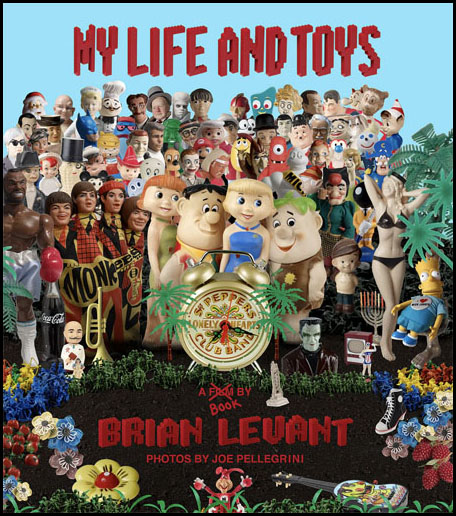
Jerry Beck: When did you start collecting? Did you amass this stuff from when you were a kid, or did you start collecting as an adult?
Brian Levant: It started when I was a kid, my attraction to toys. We just unearthed an eight-millimeter film that they had sent to my grandparents when I was about nine or ten months old. I had this fascination with this wind-up penguin.
Also my Bozo Doll, and this was the toy that I carried around. I mean, yes, kids get attached to things, but I think my attractions were maniacal. And it wasn’t for everything. It’s like I had to have that Mickey Mouse bell on my first two-wheeler. I had to have the Zorro watch, with the little felt Bolero hat that you stored it on. I had to have the Pluto clock with the moving eyes and the glow-in-the-dark bones for hands. I had to have the Charlie Horse and Lamb Chop. I mean, I couldn’t live without these things. And of course, I collected comics. Not so much cards. Very heavy on the comics. And yes, I suffered the same malady most people did. I came home from camp going into my sophomore year of high school to find out that my mother had thrown out my comics, my baseball cards, and our father. And I was really upset about the comics.
Jerry Beck: Yikes. But didn’t we grow up in a great age? Not only did we have that great pop culture on TV, but these toys and memorabilia. I guess we can see earlier generations had something like this, but somehow, in the 50s’ and 60s’, it was great.
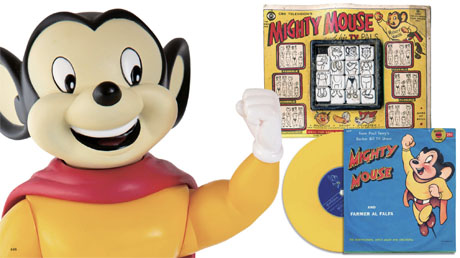
BL: Oh, yeah. Because television was the greatest salesman that ever lived. So when my wife moved in with me- directly from high school, actually- she brought her dowry so to speak. This included two salt and pepper shakers that a friend had given her that had belonged to Andy Warhol. Remember, he did a big sale at one point of all his warehouses?
From there we started collecting salt and pepper shakers, and pretty soon we had hundreds. And you had the cool penguins, and Mr. Peanut, and all the advertising ones. It spurred us (me in particular) to keep seeking out more and more of these. And then in 1975, she bought me Robert Lesser’s book, A Celebration of Comic Art and Collectibles. Did you know Robert Lesser?
JB: No, I don’t that book.
BL: Wow. I am really surprised. He was an incredible, incredible collector. His collection drew from the dawn of comic strips and stretched to the characters who became radio shows and toys and comic strips. Buck Rogers. He sold his collection in 2000 for over $1 million. But his campaign was to treat comic art and collectibles as art, so he had museum shows and things.
JB: I’m surprised that I don’t know that book.
BL: Anyways, the book was amazing. It was a price guide history. Not many pages in color. Looking back at it recently, there were far fewer photographs than I had remembered. But on the back cover was a picture of him sitting in a good size room, and things were hanging from the ceiling. Beautiful, his collection – and I saw my future. Truly.
We were young, we were poor, and we found interesting things. And soon they began to coalesce really into collections. Popeye was one of Robert Lesser’s focuses, and soon it became mine.
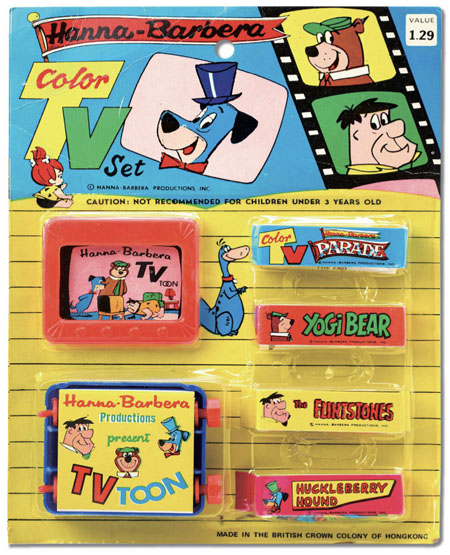
BL: Let’s talk about animation for one second, because I was hooked, I mean hooked, on TV. The same way I was about toys; with Winky Dink, Crusader Rabbit, and the lowest forms of early animation. I was there to watch the premier of Ruff and Reddy.
I can’t remember why they felt it was necessary for a cartoon show to have a human host. But that was my introduction to Hanna-Barbera. It was that same year, I believe, that Warner Bros released their library to local stations, as well as the Fleischer Studio stuff.
I grew up in Chicago, where the winters are long and cruel, and you spend many, many hours in your basement watching local TV. Which was nothing but funneling those cartoons. And The Woody Woodpecker Show was syndicated. So I was a fan, but also a student of television, storytelling, and characters. And my associations with those shows and characters were tremendously strong. It fueled a lot of my collecting.
JB: We are lucky that that period in the 50s’ and 60s’ of watching TV… I was the same as you. Our generation had something phenomenal. We had the history of movies, the history of TV, and the history of animation projected to us on a daily basis…
BL: …while we were growing up. I know what you mean! The kids today…all that stuff may be out there on YouTube, but there’s nobody curating it for them. You’d have to go out and find it. You have to go get it. We just sat there and it was beamed to us.
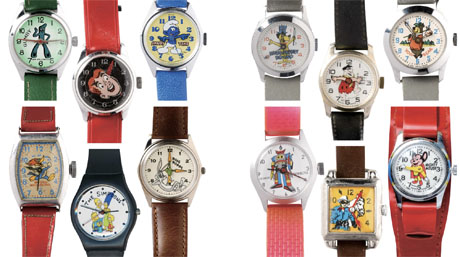
BL: I’ll tell you an interesting thing that I’ve discovered: if you look at all the Chicago filmmakers of my generation, (Ramis, Zemeckis, John Hughes, me) I think our work is all… very different. But it’s very similar. It really is. And to me, it really comes from the mix of the entertainment that we watched on the local stations after school in our formative years. And it was a combination of Looney Tunes and The Three Stooges and Andy Clyde. But also with Lassie and Leave it to Beaver, and all these very kind of soft, family shows that were interspersed with the mania. And if you look at all of our films, they really walk that line of broad comedy and sweetness and innocence.
JB: But there are so many different topics in your book. I love how you have it presented.
BL: That was the other issue of not doing a single subject book, of not trying to put everything under the same umbrella. I wanted to summarize and share all these different things that interest me, and present it. All other toy books are photographs, which is just placing them against a background and shooting it. I wanted to, in the tradition of Robert Lesser’s thinking, (although not really reflected in this book), treat these things as pieces of art and shoot them. I love are the variations – that the people in Japan, who colored Flintstones toys after having only seen a black-and-white show, had free range to roam and interpret. The toys were much more like fan art is today, with a personal interpretation of the characters.
JB: That’s how we end up having Barney with green hair and Dino being gray They were imagining what colors they were, because we were watching black and white.
BL: Yeah – hell, my family didn’t get a color TV until I demanded it for the second season of Batman.
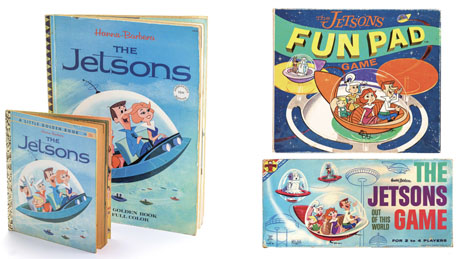
JB: I want to mention, your chapter titled “Saddle Sore”, where you have the Hoppy and Roy and Dale. I love those shows. I grew up with those shows too. They’re not really talked about as much because I think westerns have fallen out of favor.
BL: Well, westerns were replaced by science fiction. Today the best western on TV is The Mandalorian.
JB: So many great subjects are in the book. The Beatles, Rockets and Ray Guns. I am absolutely crazy for those things.
BL: Yes. Well, that centers on the fact that I’m not a Star Wars collector, unlike everyone else in the universe. If you’ve seen the Hakes auction catalog, it’s mainly political buttons and Star Wars. But my love for it all grows out of Flash Gordon. And watching on Sunday mornings in Chicago at 6:30 am…
JB: Me Too.
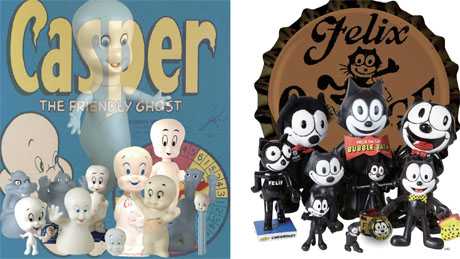
BL: I also worked on Casper, the movie.
JB: Yeah. I thought you did. Remind me what you did on that movie.
BL: So Steven comes to me two weeks before they start production and says, “Why don’t you get some of your guys together and do what you did on the Flintstones for Casper?” So in two weeks, Brad Silvering had a lot of big block scenes planned out. And so what we basically did was work the story so it was successful and build bridges between those scenes. And I think we really made it a much, much better movie.
JB: Well, it was a good movie and it was a success. And it really kept the character of Casper alive in the public view.
BL: The thing is – if you don’t do something with these classic characters… they pass away. I’m hoping my new book will keep the favorites from our childhoods around a little longer.


 October 11th, 2022
October 11th, 2022  Jerry Beck
Jerry Beck  Posted in
Posted in  Tags:
Tags: 






